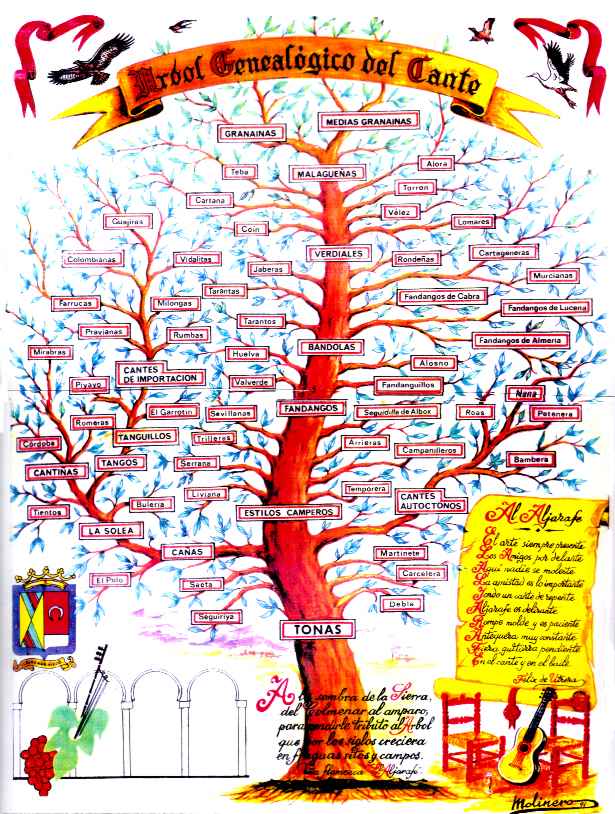|
duende -> RE: Arbol Genealogico del Cante (Jan. 5 2007 7:00:34)
|
i thought the original of serranas was about a bandit girl from the mountains.
why it has a siguiriyas rythm i don´t know
Serranas
Origins : Córdoba
The experts have as of yet not been able to locate geographically the origins of the ‘cante por serranas’. Many think that it comes from Córdoba, but this is only one hypothesis. It is a ‘copla’ of four verses that rhyme in pairs, the first and the third have seven syllables, the second and fourth have five syllables. It is definitely related to the ‘seguiriya’ since it follows the same rythmic structure, although its accompaniment by guitar is done ‘por arriba’, in E, instead of ‘por medio’. It is known that, one of the first people to perform it was Silverio Fanconetti and afterwards El Mochuelo, El Tenazas, El Onubense Antonio Rengel. Its words tend to make reference to banditry, and from there the name of the ‘serrana’ for this reason it isn’t strange that this song began in the XIX century. Its structure is very rigid and in begins with a “temple por liviana” all the ‘serrana’ is executed in F and finished in different ways, the most widely spread is the ‘seguiriya’ by María Borrico, but the ‘macho’ by Pepe de la Matro is used or even the ‘cante abandolao’.
also a link to a song http://www.andalucia.org/flamenco/palos/sonido/serrana.mp3
|
|
|
|

